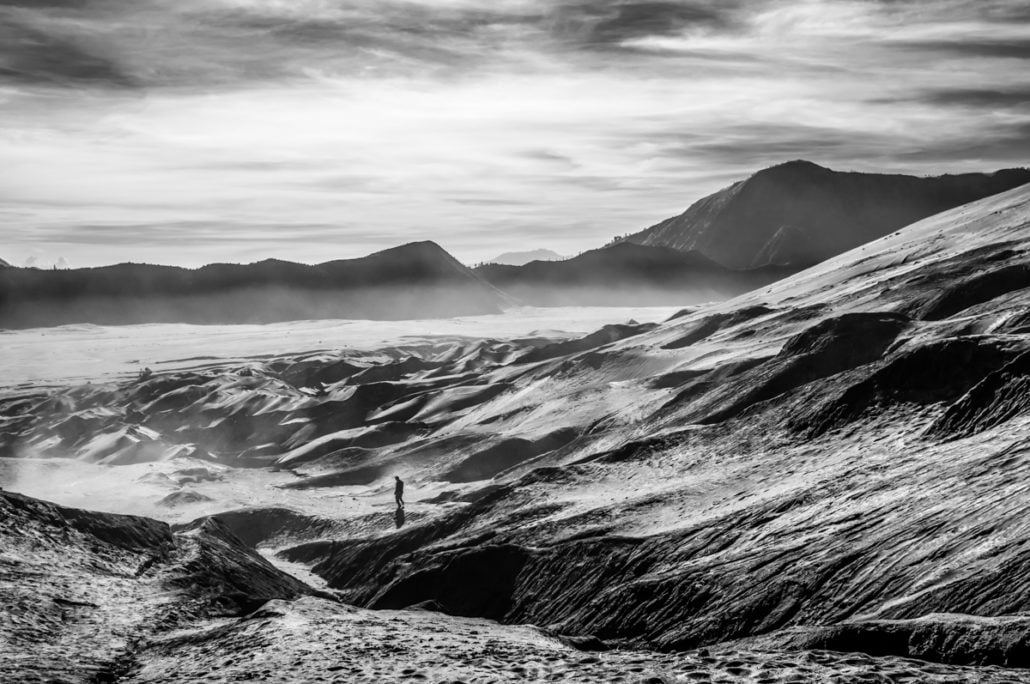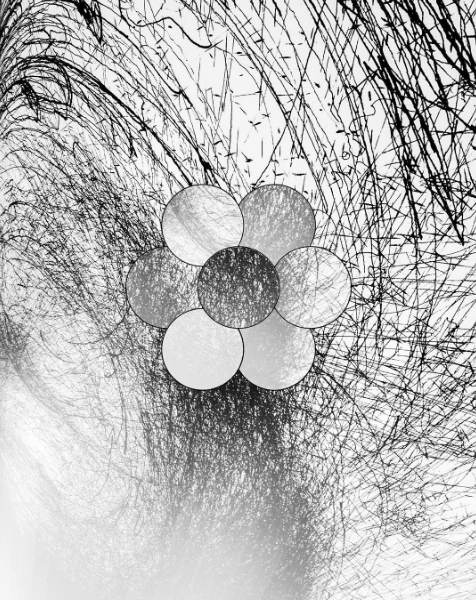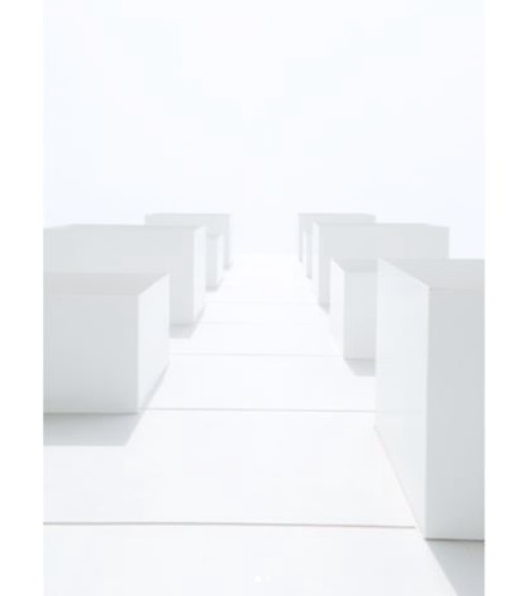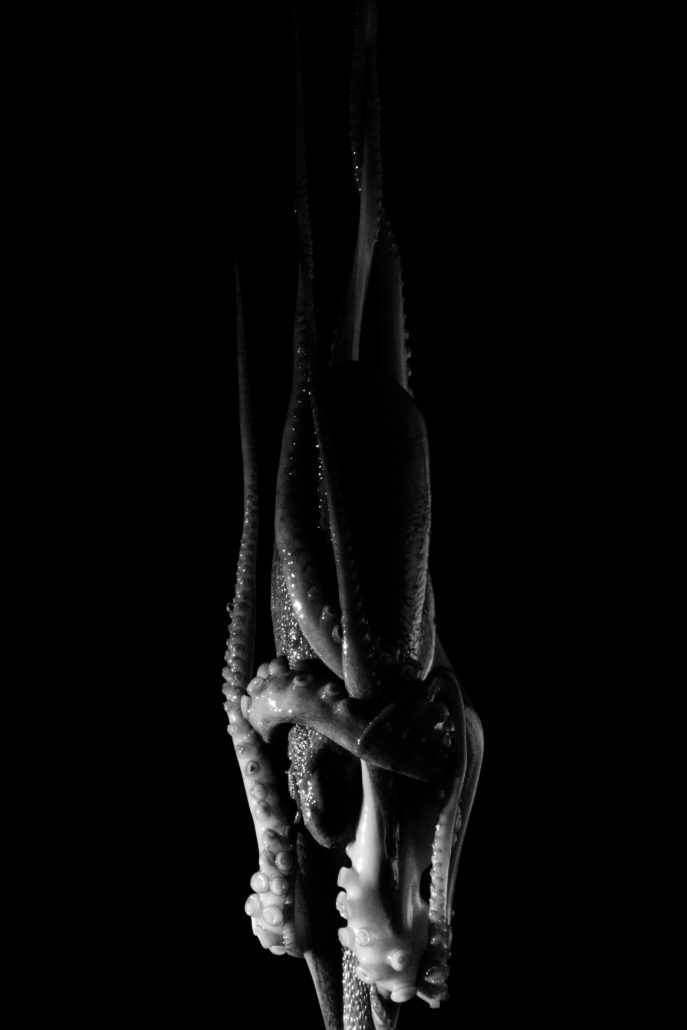Today we are looking at third-year commercial student Andrew Arismunandar, who had one of his images included in Blow Up Photography Competition and Print Annual, issue 3.
Andrew's image "Sea of Ash" was entered into the black and white category, and depicts Mount Bromo in East Java; an active volcano that is only accessible by foot or horse. The image was taken when Andrew was 15; he and his mother rode out to the 2329 metre high beast that constantly spews sulphuric smoke across the landscape, covering everything in a thin layer of ash.
"You need a gas mask because there is a lot of sulphur"
When asked how this falls into his current work, he replied 'It was the only black and white photo I have, so I thought "why not!" '. Andrew's previous folio was titled "Decadence" that paired graphics and images to revolve around sacred geometry. i.e. The egg of life, the tree of life, etc. " It is a critique of Christianity. I have been a Christian for the past 15 years. From all those years, I’ve witnessed the ugly/good side of the church community and I wanted to express it through my work."
"I guess I'm not the standard commercial photographer, I'm interested in graphics"
What got you started in photography?
The earliest I can remember is when I was 8, when I got my first cell phone. I used to play around with the phone’s camera and take photos of my friends and pretty much my daily activities. One of the things I would frequently do is to take photos of real life objects and obscure them, essentially abstracting them. It’s a neat little thing I would do if I don’t have any interesting objects/subjects. I only got serious when I was 13, my dad was working in marketing for his company at the time. He was working as a graphic designer and a photographer at the time. During his off time he would lend me his DSLR camera just to experiment with it. Honestly I’m convinced he did it just to get me off from playing too much video games.
When you first started at PSC, what kind of photographer did you imagine you would become?
I’ve always envisioned myself as a freelance photographer that occasionally do commercial work for clients, and sell my personal work on the side. I think it’s a good way to maintain my personal style while being able to make good money as well.
What is the most beneficial thing you have learned?
The most beneficial thing I’ve learned from PSC is realising that art is a lot more dynamic than I initially thought. Usually before I watch/play a movie or a game, I would check out the reviews on Metacritic or Rotten Tomatoes. In these sites they always have an overall score like say Fight Club has a 79% on Rotten Tomatoes. I’ve always thought that an artwork needs to follow a linear criteria. If a person follows the criteria well they will receive the much coveted 100%. This changed when I went to PSC, because that’s when I learned that there is no right or wrong in art. Art is very complex, and not to mention people have all these different reactions towards a work of art. The only failure in art is to not being able to attain your own goals. Like if you’re creating a work that explores the theme of depression, if your audience feels sad then you succeed. This is a very basic example, there are a lot of factors ranging from lighting, colours, models and etc that draws a specific emotions from viewers. If a person uses these elements wisely, they will surely succeed with their finished product.
What was your most challenging moment at PSC?
The most challenging moment at PSC will always be coming up with an idea for a folio. You can do anything you want, but what do you want? Of course what I want to do is very hard to achieve, which requires a lot of knowledge in special effects and complex lighting. I remember my 2nd year folio being a failure, because I couldn’t achieve the special effects that I couldn’t possibly achieve with the skills I have at the time. There needs to be a balance in creating something you’re interested in and want to learn. In the same time it has to be realistic and too difficult to achieve them.
What was your most rewarding moment at PSC?
The most rewarding moment at PSC is every time I finish a folio and get good marks out of it. I look back and go: “Wow everything turned out a lot better than I thought, I can’t believe I was freaking about this few months ago”. Happens every semester, and that feeling of satisfaction never gets old.
Recently, Andrew has also won a silver award in the AIPP Victorian Commercial category - awesome work!
How has your style developed?
Overall my interest lies in the surrealism genre, I’ve been exploring the genre in the past 2 and a half years. It started off from merely abstracting the architecture in Melbourne, to creating surreal landscapes and abstracting organic creatures. Overall I’m still experimenting with different styles and still figuring out my strengths and weaknesses.
What are you working on at the moment?
My current folio is Kronos, it is a heavily inspired from the short stories of H.P. Lovecraft and Hideo Kojima’s “Death Stranding”. It’s going to be a series of images that explores the fear of the unknown. I believe we are all created by a blind and uncaring chaos. The world can just take away your hard work in an instant if it wants to, like a sick joke with no punchline. It’s a genuine fear that I have and something I’ve been trying to actively suppress through religion. With this project I want to explore this idea in depth and hopefully overcome my fears.
What advice would you give to current students?
Don’t get cocky. It’s very easy to get cocky with the combination of DSLR cameras and social media. The photography medium is not crafted from scratch (like paintings), it is crafted through the photographer’s surroundings. With a good DSLR camera, you can shoot randomly and get an accidental masterpiece. The combination of social media doesn’t help either. Most people tend to confuse that their friends “like” the image, not because of the image quality, but because of the person themselves. Friends are always biased and will always be happy with what you do. Some guy’s badly composed photo of his lunch can get triple the “likes”, compared to a photographer that made a genuinely well composed photo (all due to how well acquainted the person is with most people).
What do you do when you’re not taking photos?
I usually just watch films on my spare time. Films and photography are similar, as it is a medium that relies on the environment (except for animation). The great thing about movies is that despite being a different medium I can still learn from it visually. So it’s like killing 2 birds with 1 stone, I’m entertained while in the same time I also get visually inspired by them.
What is your dream job/shoot?
My dream shoot is being able to craft a series of images that will immerse my audience and make them feel euphoric. I want to achieve a similar effect to the third final act of Kubrick’s “2001: Space Odyssey”. I want people to say: “I don’t know what the hell this is, but it’s goddamn beautiful”.
Stay tuned on his Instagram account



